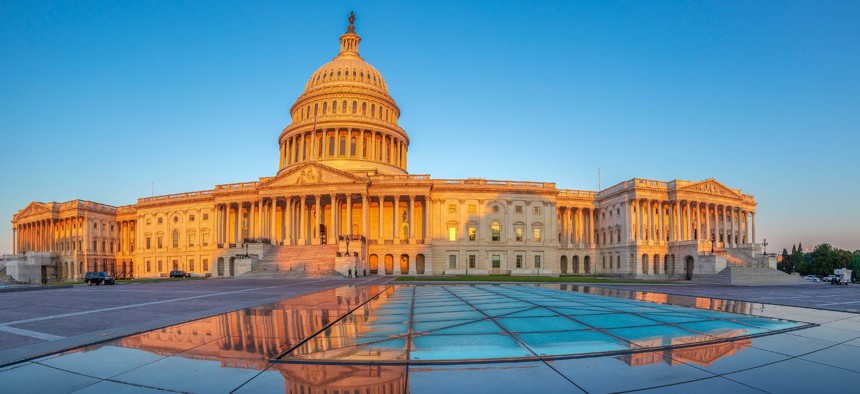Introducing Route Fifty's New Federal Funds Newsletter

iStock.com/florin1961
A weekly update on the recovery dollars flowing from Washington, D.C. to states and local governments.
Route Fifty launched a new newsletter today to provide weekly updates on what's happening with all the federal aid the federal government is sending to states and localities. A copy of the first edition is below. The newsletter will go out on Tuesday afternoons and Route Fifty Today subscribers will receive it automatically. If you don't subscribe to Route Fifty Today, and would like to receive This Week in Federal Funding, you can sign up for it here. Thanks for reading!
***
Hello Route Fifty reader! I'm Senior Editor Bill Lucia, welcome to the first edition of This Week in Federal Funding, your go-to source for staying up to date on what's happening with the unprecedented sums of federal money now flowing out of Washington, D.C. to states and localities around the country.
From R50 this week: We have new coverage from staff correspondent Andrea Noble on the Federal Communications Commission's $7 billion program to help improve internet connectivity at schools and libraries. Jacob Fischler reports on why state and local governments have struggled to distribute billions of dollars in rental aid. And I zoom in on Clear Creek County, in the mountains of Colorado, and how officials there are laying groundwork to use their American Rescue Plan Act (ARPA) allotment. We're also including Liz Farmer's recent article on local governments' efforts to gather feedback from residents on how to spend their portion of the federal funds.
What to watch: The big pot of federal money in play is, of course, the $350 billion ARPA program that the Treasury Department launched last month providing direct state and local aid. A major question with those funds is how places will balance spending to relieve near-term budget pressure against longer-term investments in areas like infrastructure and economic development. The answer will vary from place to place, but is starting to come into focus.
For instance, in Dallas last week, City Manager T.C. Broadnax and other city staff presented the city council with a proposed spending framework that calls for using about $115 million of the city's $355 million allotment on infrastructure and $110 million for "fiscal recovery and sustainability" and replacing lost revenue. Chief Financial Officer Elizabeth Reich noted that the city is unlikely to cover its full fiscal 2020 or 2021 lost revenue using the federal aid. (She didn't have a firm estimate yet for those losses, but suggested they will exceed $100 million across the two years.) "We don't believe that using all of our American Rescue Plan money to replace lost revenue is where we want to be from a policy perspective," she said. Broadnax made comments that underscored how much the fiscal outlook has improved since the early days of the pandemic and with the arrival of federal aid. "It will absolutely be the best budget any of you have ever seen in your entire lifetime," he told the council.
Meanwhile, in Madison, Wisconsin, Mayor Satya Rhodes-Conway noted Friday that the city budget was down by more than $44 million compared to pre-pandemic revenue growth estimates, off roughly 9% for 2020. The city also dipped into $8 million of reserves to balance its 2021 budget. "We expect to face continued shortfalls in 2021," said Rhodes-Conway. Against that backdrop, city leaders are proposing for the 2022 budget cycle to appropriate about $24 million of Madison's $47 million allocation to maintain government services, balance the general fund, and stabilize a local convention center and programs funded by a tax on hotel rooms. Under a plan the mayor outlined, another $22.8 million would go to certain priority areas, including programs focused on homelessness, small business support and affordable housing, including $2.5 million to convert hotel space to housing—"A project that we've long wanted to move forward," the mayor said. "These funds will make it possible for us to get started."
During a Route Fifty event last month, I asked Hughey Newsome, chief financial officer of Wayne County, Michigan (a local government that narrowly avoided bankruptcy about six years ago and has been on a path to financial recovery since) what he thought had bigger implications for the county's finances: The hit from the pandemic, or the boost from the county's $340 million ARPA allotment? "It should be the latter, it should be the ability for us to use this money to transform what we do," he said. "This is an opportunity that might not come again."
If you have news tips or feedback on what we should be covering, if you want to share your community's story, or if you just want to say hello, please email us at: editor@routefifty.com. Until next week, I'm Bill Lucia for Route Fifty.
This week's federal funds stories from Route Fifty:






